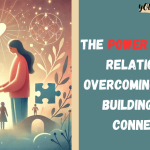
Narcissists have a unique ability to manipulate situations to their advantage, often leaving their victims emotionally drained and questioning their reality. This behavior is not random, but rather a calculated strategy rooted in a desire for control, dominance, and self-preservation. Understanding the tactics narcissists use to shift blame and create self-doubt is essential to breaking free from their psychological grip.
Anatomy of Blame Shifting
Blame shifting is a hallmark of narcissistic behavior. It’s a way for narcissists to avoid accountability for their actions while simultaneously making others feel responsible for any negative outcomes. Here’s how they do it:
- Denial and Minimization
Narcissists are experts at minimizing or denying their actions altogether. If confronted, they may respond with statements like “You’re overreacting” or “That never happened.” By minimizing the issue, they cause the other person to question the validity of their concerns. - Transference
When a narcissist is directly accused of wrongdoing, they will often shift the conversation to focus on the accused’s flaws or past mistakes. This tactic diverts attention away from their behavior and puts the other person on the defensive. - Playing the Victim
Narcissists often portray themselves as the victim in any given situation. This not only garners sympathy, but it also diverts attention from their responsibility. For example, if someone criticizes their actions, they might say, “You’re always attacking me. Why do you hate me so much?” - Emotional Manipulation
Emotional manipulation is perhaps the most insidious of blame-shifting tactic. Narcissists use it to manipulate others into doubting their perceptions and memories. Phrases like “You’re imagining things” or “That’s not what I said” are common tools in their arsenal. Over time, this erodes the victim’s confidence in their ability to discern fact from fiction.
How Narcissists Create Self-Doubt
Narcissists excel at making others feel insecure about themselves. This is not accidental; self-doubt undermines their targets and makes them more vulnerable to control. Here are the main strategies narcissists use to sow seeds of doubt:
- Undermining Trust
Narcissists often disguise their criticism as “helpful advice” or “constructive feedback.” Phrases like “You’ll never get that right” or “I’m just trying to help you be realistic” are designed to chip away at a person’s self-esteem. - Inconsistent Behavior
One day, a narcissist might shower someone with praise; the next day, they might be harshly criticizing them for the same thing. This inconsistency creates confusion, leaving the victim unsure of what to expect or how to act. - Emotional Manipulation
Narcissists use emotions as a weapon. They may exaggerate their own feelings to make others feel guilty or downplay their target’s feelings to make them feel invalidated. Phrases like “You’re too sensitive” or “Stop the drama” are common examples. - Exploiting Insecurities
Everyone has vulnerabilities, and narcissists are adept at identifying and exploiting them. They may subtly bring up past failures or insecurities to keep their target feeling inadequate.
The Effect of Blame Shifting and Self-Doubt
The effects of these manipulative tactics can be profound and long-lasting. Victims of narcissistic abuse often experience:
Chronic self-doubt: Over time, constant questioning of their perceptions and feelings can cause victims to lose confidence in their own judgment.
Emotional exhaustion: The mental energy required to deal with a narcissist’s tactics can be exhausting, leaving little room for personal growth or self-care.
Isolation: Narcissists often alienate their targets from friends and family, making it difficult for them to seek support or validation.
Low self-esteem: Constant criticism and inadequacy can lead to feelings of inadequacy and low self-esteem.
Read also: 5 Mind-Blowing Secrets Your Narcissist Hopes You’ll Never Realize
Breaking the Cycle
While the effects of narcissistic manipulation are harmful, recovery is possible. Here are some steps to regain control and rebuild trust:
- Educate yourself
Understanding the tactics narcissists use is the first step in recognizing and resisting their manipulation. Knowledge enables you to see through their behavior and protect your emotional safety. - Set boundaries
Setting clear boundaries is crucial. Identify the behaviors you will and will not tolerate, and communicate these boundaries firmly with others. For example, you might say, “I don’t feel comfortable discussing this topic any further.” - Seek support
Talking to trusted friends, family, or therapists can provide validation and help you process your experiences. Support networks are essential to breaking the isolation that narcissists often impose. - Rebuild your self-confidence
Engage in activities that make you feel empowered and fulfilled. This might include taking up a hobby, setting and achieving personal goals, or practicing self-care rituals. - Think about the career
Therapists trained in narcissistic abuse recovery can offer personalized strategies to help you heal and regain a sense of self.
Recognizing Red Flags in Future Relationships
One of the most empowering outcomes of understanding narcissistic manipulation is being able to spot red flags in new relationships. Look for behaviors like excessive charm followed by subtle criticism, an unwillingness to take responsibility, or attempts to control your actions and emotions.
Final Thoughts
Narcissists’ manipulative tactics are powerful, but they are not insurmountable. By understanding how they shift blame and create self-doubt, you can protect yourself and take steps toward recovery. Empowerment begins with awareness, and every step you take away from their influence is a step toward reclaiming your life.




